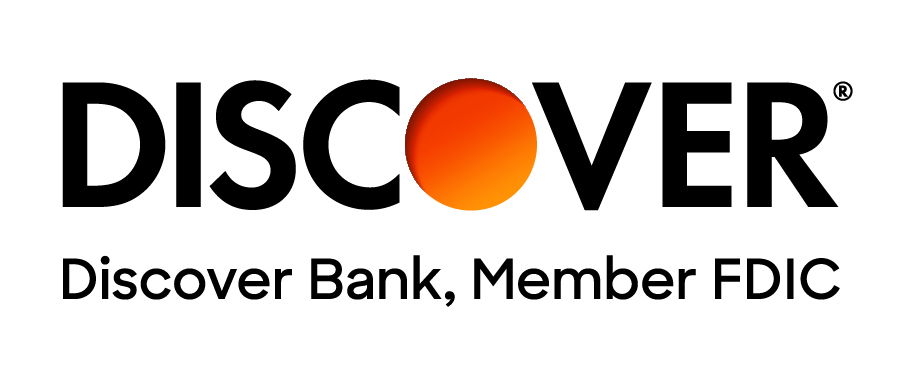How to Refinance Parent PLUS Loans
Many parents rely on Parent PLUS Loans to help fund their child’s education. When repayment begins, consolidating or refinancing these loans can be a smart strategy. Since loan forgiveness is less common than many anticipate, having a solid repayment plan is essential. Refinancing could help you lock in a lower interest rate, lower your monthly payments, or even transfer responsibility for the loan to your child—provided they meet the lender’s credit criteria.
These are all great reasons to refinance. Here are the details you need to know.
Can You Refinance Parent PLUS Loans?
Yes. Loan borrowers have the option of refinancing Parent PLUS Loans with a private lender. While you may consolidate Parent PLUS Loans with a Federal Direct Consolidation Loan, refinancing is the only way to lower your interest rate or transfer a Parent PLUS Loan to the student. This option comes with a variety of pros and cons that you will want to explore before you make a decision.
How to Refinance a Parent PLUS Loan
- Locate Loan Information
The first thing you will need to do if you want to refinance is locate all of your relevant loan information. To locate your loan servicer, log in to your student aid account with your FSA ID. There you will be able to view all of your government student loans, including Parent PLUS Loans and any federal student loans you may have for yourself.
Note: If you have your own federal student loans as well as Parent PLUS Loans, you may choose to refinance these federal loans together into one new loan.
Note: If you have private parent student loans as well as Parent PLUS Loans, you may choose to refinance those loans together into one new loan.
- Compare Lenders
Once you’ve gathered the contact information and balances for your existing loans you will want to compare lenders to find the right fit for you. Compare features such as:
- Interest rates
- Interest rate reduction for enrolling in auto-pay
- Repayment term options
- Cosigner release
- Maximum loan amount
- Minimum credit score (typically a soft credit pull)
- Deferment options
- Fees (if any), such as application or loan origination fees
- Apply
Once you’ve chosen a lender it’s time to apply as a loan borrower. Most lenders offer an easy online application to get you started. If you are transferring a Parent PLUS Loan to your child, your child will need to apply for the refinance loan.
Should You Refinance Parent PLUS Loans
Whether or not you should refinance Parent PLUS Loans depends on what you want to achieve. If you’re looking to lower your interest rate or transfer the loan to your child, you will only be able to achieve this through refinancing your Parent PLUS loan with a private student loan refinance lender.
It's important to note, when you refinance federal Parent PLUS loans, you will lose any benefits that come with the federal student loan program, such as federal repayment plans, as well as deferment and forbearance. If you are not eligible to take advantage of these programs nothing much is lost and federal loan refinancing with a private lender may be the right move.
How to Transfer a Parent PLUS Loan to Your Child
In order to transfer a Parent PLUS Loan to your child, your child will need to apply for the loan. This will require them to have a minimum credit score of 670 as well as stable employment. A soft credit pull will be made to check the child's credit score, and if the credit score is above the lenders minimum requirements, the loan transfer will likely be approved.
If your child needs a cosigner to refinance the loans into their name, look for a lender that offers cosigner release. This allows the cosigner to be released from responsibility for the loan after a series of consecutive on-time payments (typically 24 to 48 months), as well as meeting other requirements the lender—make sure to read those terms and conditions!
Your child should compare lenders and follow the application process outlined above.
When to Refinance Parent PLUS Loans
The best time to refinance Parent PLUS Loans is when interest rates are low. Current refinance rates start as low as 4.47%, making it a great time to refinance Parent PLUS loans.
If you’re looking to refinance Parent PLUS Loans into the student’s name, you will want to wait until the student has secured stable employment and has a credit score of at least 670 (however, some lenders may require a higher credit score). If their credit score is lower than 670, the best option typically is for them to build their credit score up over time and then refinance the loan later.
Pros and Cons of Refinancing Parent PLUS Loans
As with most things, refinancing Parent PLUS Loans has its pros and cons. Let’s look at the benefits of Parent PLUS loan refinancing you will want to consider before taking action.
Pros of Refinancing Parent PLUS Loans
Reduce your number of monthly payments
Refinancing student loans, including Parent PLUS Loans, allows you to roll multiple loans into one new loan, reducing the number of payments you need to make each month. You do not have to have multiple student loans or Parent PLUS loans to refinance. You may refinance a singular loan as well.
Transfer loan to child
Refinancing a Parent PLUS Loan is the only way to transfer the loan to your child. If this is your goal you will want to pursue private loan refinancing.
Lower your interest rate
If your main goal is to lower your interest rate Parent PLUS loan refinancing may be right for you. Refinancing your existing Parent PLUS Loans with a private student lender is the only way to pursue a lower your interest rate. Your lender will determine your interest rate based on your credit.
Lower your monthly payment amount
When you refinance your Parent PLUS Loans, you can select your new repayment term. If you’re looking to lower your monthly payment amount, you may choose to extend your repayment term out longer to make each monthly payment lower.
No origination fees
Many private student loan refinance lenders do not charge origination fees for disbursement of the loan.
Cons of Refinancing Parent PLUS Loans
Now it’s time to look at some of the drawbacks of refinancing Parent PLUS Loans with a private lender. Note that the cons to refinancing Parent PLUS Loans are primarily related to taking your loans out of the federal program.
Lose eligibility for federal repayment options
When you refinance student loans with a private lender you will lose eligibility for the federal repayment programs, such as, income-contingent repayment.
Lose eligibility for federal deferment and forbearance
Perhaps the most important federal loan benefits you need to weigh losing are the generous periods of deferment and forbearance offered with federal loans. Some private loan lenders may offer some sort of hardship forbearance, but these periods aren’t as lengthy as those offered by the federal program and are not a feature of all lenders.
Parent PLUS Loan Consolidation
An alternative to refinancing your parent PLUS loans with a private lender is to consolidate them through the federal Direct Consolidation Loan program. This is the federal student loan (which includes Parent PLUS loans) consolidation program, and is only available for federally held loans, meaning if you want to combine federal and private student loans together, you would not be able to do so with a Direct Consolidation Loan. You do not have to include all of your federal student loans in your consolidation loan if you don't want to. If the consolidation process becomes too complicated to undertake alone, you can always look into talking with a student loan advisor as well.
Let’s look at the pros and cons of Direct Consolidation Loans.
Pros of Parent PLUS Loan Consolidation with a Direct Consolidation Loan
Combine multiple loans into one
If you have several federal student loans with different loan servicers consolidating your loans will simplify your payments by combining multiple loans into one with a singular loan servicer.
Parent PLUS Loan may become eligible for Public Service Loan Forgiveness
When you consolidate your loans through the federal program your Parent PLUS loan may be eligible for Public Service Loan Forgiveness (PSLF). You would need to repay the Direct Consolidation Loan under an income-contingent repayment plan and meet all other eligibility criteria for Public Service Loan Forgiveness.
Retain deferment and forbearance
The federal student loan program comes with generous periods of deferment and forbearance to help borrowers who have encountered hardship or inability to pay.
Loans will be discharged if you or your child dies
With the federal student loan program if you or the child you borrowed the loan for passes away, loan forgiveness also applies.
Adjust your repayment term
When you consolidate Parent PLUS Loans, you may choose a new repayment term (up to 30 years). This will lower your monthly payments by extending the amount of time you have to repay the loan. You will continue to be charged interest over the life of the loan, meaning if you extend your repayment term, your parent or student loan debt will cost you more over time.
Cons of a Parent PLUS Loan Consolidation with a Direct Consolidation Loan
Cannot get a lower interest rate
When you consolidate Parent PLUS Loans with a Direct Consolidation Loan, your new interest rate will be the weighted average interest rate of your existing loans. Essentially, this means that your interest rate will not really change but will be an average of your existing interest rates, weighted by loan balance. Learn how the weighted average interest rate is calculated.
Cannot transfer loans to your child
When you consolidate your loans with a Direct Consolidation loan you have no opportunity to transfer the loan to your child. The loan remains in your name for the life of the loan or until you transfer the loan to your child with a private loan refinance.
Loss of repayment benefits
If you have been paying your loans under an income-driven repayment plan, you will lose any credit for payments made toward these programs.
Student Loan Repayment Relief
Need Help Paying Your Student Loans? Edvisors is giving out $2,500 in Student Loan Repayment Relief! If you would like a chance to win $2,500 towards paying down your student loans, make sure you enter!
- One winner per quarter.*
- Quick and easy form.








